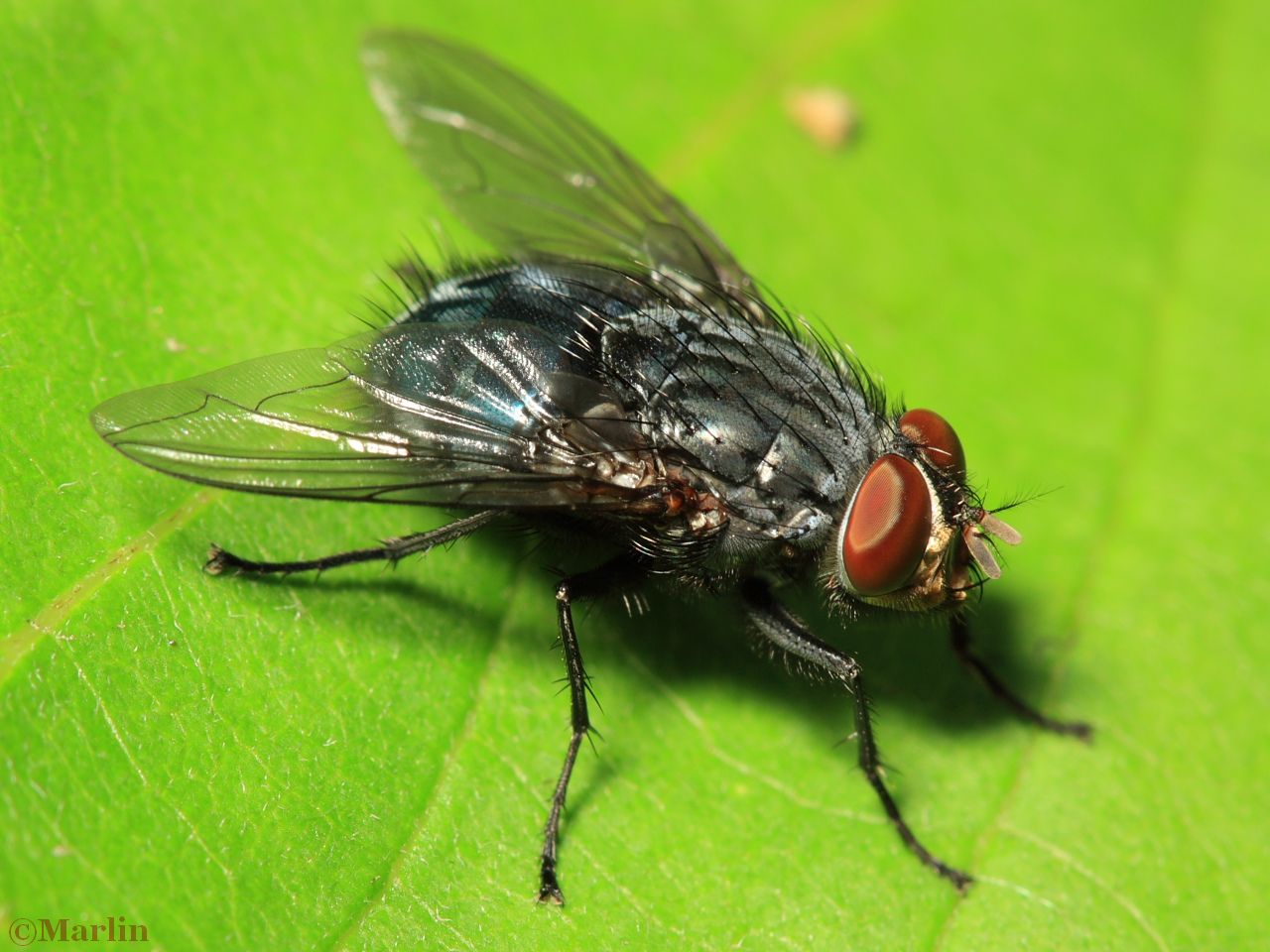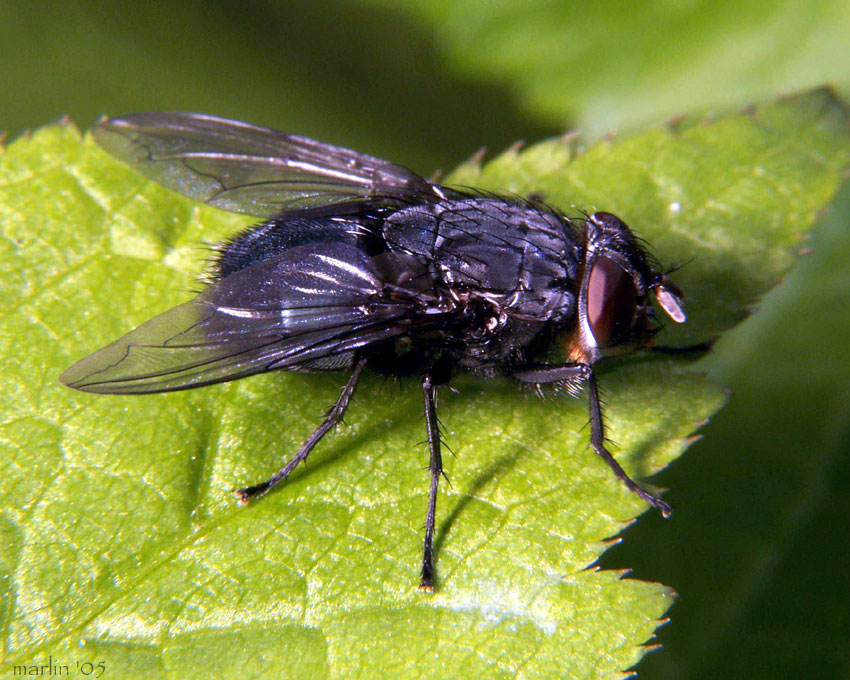Family Calliphoridae – Blow Flies
A lovely golden-haired female from Pennsylvania: Cluster Fly Pollenia sp.
Flies in the genus Pollenia are commonly called “cluster” flies after their habit of gathering in conglomerations. They superficially resemble house flies, but are slightly larger. Cluster flies at rest overlap their wings, whereas house flies do not.
Most blow flies lay their eggs almost exclusively in dead or rotting flesh. A few species’ larvae are parasitic on bird nestlings, some have larvae that live as internal parasites of mammals; they are serious pests of livestock, especially in the tropics. They cause myiasis, a condition in which their larvae inhabit the skin or connective tissue of large mammal hosts. Larvae of some bot flies (Oestridae), and flesh flies (Sarcophagidae) also use this parasitic stage. [1].
 Caliphora vicina, present on every continent save Antarctica
Caliphora vicina, present on every continent save Antarctica
Calliphorids are usually the first insects to arrive at a fresh carcass, sometimes within minutes of death; they are attracted by the organic odors of decomposition. Eggs are laid around natural body orifices or open wounds, and the larvae molt and pupate at predictable rates for any given ambient temperature and humidity; it is for these reasons the blowflies are so important in forensic pathology. Maggots (larvae) and pupariums (the hollow cases left behind after the adult fly emerges) collected from a body can be used to determine, sometimes very accurately, the time of death.
Female blow flies require a substantial amount of protein to develop mature eggs within their ovaries. A typical female blow-fly typically lays 150-200 eggs per batch, and up to 2,000 eggs during her lifetime
Lucilia sericata, the common green bottle fly is slightly larger than a housefly, brilliant metallic blue-green or golden in color, 10-14mm long. Females lay eggs in clutches of about 180 on garbage or carrion. Maggots attain full size in 2-10 days, depending on ambient temperature, then drop to the soil and burrow before pupating. There are many generations per year, the last overwintering underground as pupae [4].

Blue Bottle Fly – Calliphora vomitoria
Family Calliphoridae – Blow, Bottle, Cluster and Screwworm Flies
References
- Bugguide.net, “Blow Fly Calliphora vicina“
- Bugguide.net, “Blow Fly, Calliphora vomitoria“
- Eric Eaton, Kenn Kaufman, Field Guide to Insects of North America
- National Audubon Society, Field Guide to Insects, Alfred A. Knopf, 2000
Flies of North America – Order Diptera. Flies are prevalent in virtually all habitats, with over 16,000 species in North America. Flies can be distinguished from all other insects in that they only have one pair of normal wings. Most flies have compound eyes and mouthparts adapted for piercing, lapping or sucking fluids. Insects & Spiders | Flies Index | Syrphidae | Bee Flies | Robber Flies
